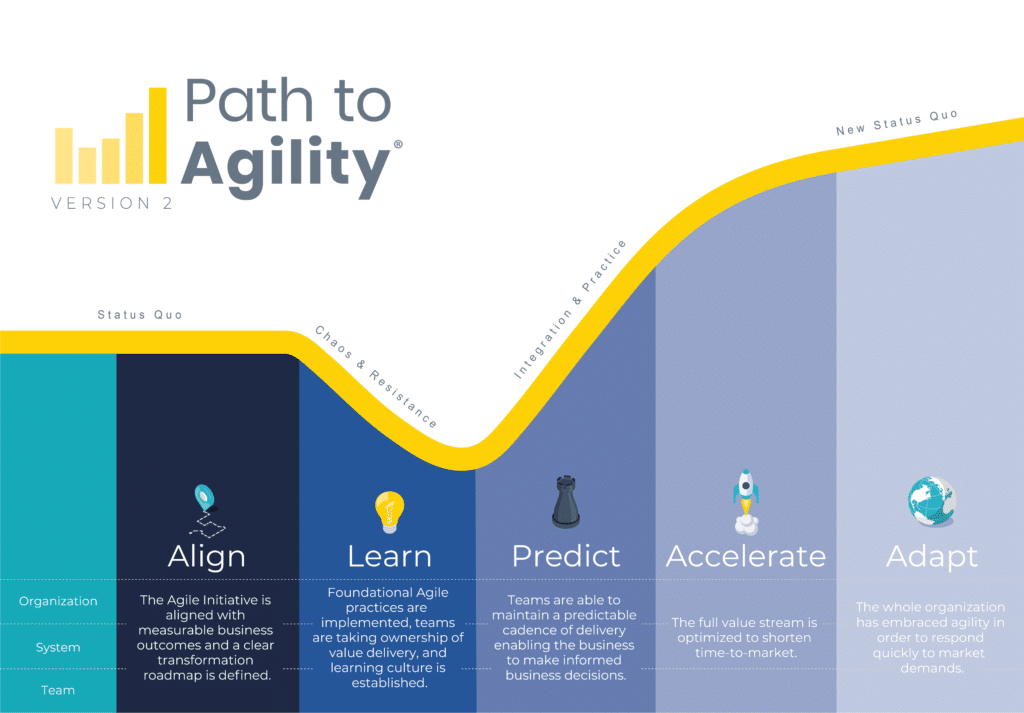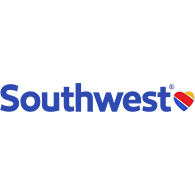The journey toward Agility can be long and challenging. Our experience and research has shown that the vast majority of organizations who take on an Agile transformation will either experience “superficial agility” which usually results in failure and reverting back to old, ineffective behaviors, or “pocket agility”, where some things may improve, but falls short of the true organizational improvements needed to be more resilient.

Path to Agility is outcome-focused, rather than practice-driven, meaning the approach is focused on building agility, not “doing” Agile things.
Path to Agility is centered on 9 business outcomes which are used to build your Agile transformation roadmap.

Business outcomes are results needed by organizations to succeed in the modern world. Business outcomes are central to your transformation strategy and are necessary to building a custom Path to Agility transformation plan.
After Business Outcomes are chosen and prioritized, Path to Agility then helps you to identify the necessary Agile Outcomes and Agile Capabilities needed to achieve your outcomes.
Agile outcomes are organizational functions that come as a result of developing an Agile mindset and fundamental Agile capabilities within the organization.
Agile capabilities are the foundational behaviors and abilities that lead to the achievement of Agile outcomes. These capabilities are tangible and measurable, but may vary across an organization.
Each Agile Capability has a set of Acceptance Criteria that can help you measure progress and find a way forward.

Business outcomes

Agile Outcomes

Agile Capabilities

Acceptance criteria
Agile practices are the processes, techniques, roles, meetings, and systems that are recommended in popular Agile frameworks like Scrum, Kanban, and Scaled Agile Framework. These practices are the tools and building blocks that allow organizations to build specific capabilities needed to achieve desired Agile and business outcomes.

The Agile practices your organization will implement along your Path to Agility depend on your environment and the work being done.
Business Outcomes, Agile Outcomes, Agile Capabilities, and Agile Practices come together to create an Agile transformation roadmap that maximizes the chances of success and minimizes the risk of failure.

Organizational change is hard. It takes time and more than just a few teams to create lasting change. That’s why the Path to Agility develops the necessary capabilities to deliver Agile Outcomes across 3 levels:
Organization – Leadership develops a modern mindset, increases visibility throughout the organization, and creates alignment around vision, goals, and measured success. Here, leaders build the necessary Capabilities to build a culture of empowered teams and continuous improvement.
System – At this level, networks of teams are coordinating and collaborating to address dependencies and achieve optimal flow in value delivery.
Team – Teams successfully take on new roles, establish agile team practices, increase engagement, and achieve sustainable, predictable cadence of delivering value.
Each level of the approach has custom outcomes mapped within them that provide visibility into the relationships, dependencies, and impacts across all stages of the journey. Watch this 6-minute video to learn how Path to Agility supports all levels of the enterprise.
Path to Agility® Navigator is a software tool designed to assess, measure, and provide visibility into your Agile transformation across the enterprise.
Become a trained Path to Agility Practitioner and learn how to use the Path to Agility approach within your organization or with your clients.

View the knowledge base, a powerful resource to empower you to use Path to Agility better than ever before.





Learn how to use Path to Agility to build an Agile transformation plan, assess your organization, and measure your transformation’s progress.